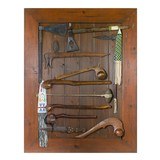 |
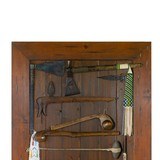 |
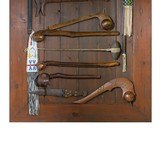 |
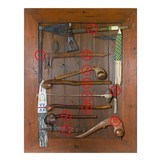 |
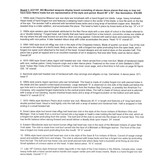 |
 |

Mounted Weapons Display Board
Guns International #: 102015485 Seller's Inventory #: AG1197_BQ
Category: Collectibles - Native American - Collectibles - Western
Seller's Information
When emailing or calling sellers direct, please mention that you saw their listing on GunsInternational.com
Seller: Cisco's Gallery
Company: Ciscos Gallery
Member Since: 9/2/16
First Name: Sam
Last Name: Kennedy
State: Idaho
Zip: 83814
Country: United States
Phone: (208) 769-7575
Fax: (208) 769-7575
Platinum Seller
Number of Active Listings: 537
Total Number of Listings: 7046
Seller: Private Seller
Return Policy: 3 day inspection and return policy on used guns.
Payment Types Accepted: Visa, Mastercard, certified funds, cashiers checks, money orders, and personal checks (items shipped when cleared). 3% surcharge on firearm purchases made with a credit card.
About Us: Cisco’s Rare & Exceptional deals in one-of-a-kind pieces that define America and the Wild West. The collection is both diverse and expansive, including historic antique western firearms, artifacts, antiques, fine art, and western home furnishings. Our store, located in scenic Coeur d’Alene, Idaho, is filled from floor to ceiling with pieces that spark romantic tales of the western frontier. Cisco’s inventory of authentic Native American art and artifacts is among the finest in the world featuring Navajo rugs, baskets, beadwork, totems, pipes, southwest jewelry and more!
Description:
Mounted weapons display board consisting of eleven dance pieces that may or may not have been Native made but are representative of the style and period. Board 48” x 52”.
1. 1880s style Cheyenne Missouri war axe style war tomahawk with a hand forged iron blade. Large, heavy tomahawk. Head made of hand forged iron and features a weeping heart cutout in the center of the blade, a nice file work on the top of the eye. The wooden haft is adorned with tarnished brass tacks and a long wrap of tarnished copper wire. Beautiful beaded drop is a later addition, and accentuates the piece. The head is held in place by brass tacks at the top. 10” x 4 ½”
2. 1890s style western pipe tomahawk attributed to the Nez Perce style with a rare style of cutout in the blade referred to as a “double batwing”. Forged head, ash handle that was hand carved from a tree branch, concentric circles are visible at the top where the pith was burned out and the clean out plug applied. Colored with walnut dyes and extensive hot file branding with nice patina. A later beaded ribbon drop with collar accentuates the piece. Head 10 ½” overall 23”.
3. 1890-1900 style duck bill effigy war club in the style of the Chippewa Indians. Made of quarter cut wood. Top of the club is carved in the shape of a bird’s head, likely a lake loon, with a forged iron spike protruding from the open beak, and a forged iron spear point attached to the back of the head. Incised designs and old walnut dyes on the wooden haft. This piece has a great art appeal and is an excellent example of art in weaponry that was later likely used as dance object. Overall 24”
4. 1870-1880 style Great Lakes region ball headed war club. Hand carved from a tree root burl. Made of hardwood maple with nice, mellow patina. Likely Iroquois origin and a later dance piece. Featured on the cover of John Baldwin’s 2002 book “Indian War Clubs of the American Frontier,” on the inner cover page, and a third time in full color on page 92 figure 330. 19” overall.
5. Seminole style ball headed club of hardwood with chip carvings and alligator on top. Varnished. A dance piece. 25”L head 3”
6. 1880s style prairie region spontoon pike war tomahawk. The head is made of crudely forged iron with pierced holes in the blade and two upward curled basal processes. Large stamped “S” is observed on one side of the blade just below the eye hole and is a documented English blacksmith’s mark from the Hudson Bay Company, or possibly the American Fur Company, who supplied forged implements to the central prairie tribes. The haft is made of hickory wood and is adorned with a wrap of iron banding, square shanked brass tacks and a wrap of fringed buckskin on the bottom end with tacks. Head 9 ½” overall 23 ¾”.
7. 1870-1880s style Northern Plains skull cracker war club. Measures 26 ½” in length and features a 6” long hard stone double pointed head. Head is held tightly onto the haft with a wrap of wetted and hardened hide. Haft is wrapped in hide ending in a small beaded tab.
8. Great Lakes style burl wood claw effigy ball head war club in the style of the Huron Indians of Northern Ohio and Michigan. Club is made from a root burl carved into a log eagle or hawk’s claw holding the ball head of the club, which as a forged iron spike protruding from the center. The butt end of the club is carved into the shape of a human face. The club has terrific balance when swung forward and would deliver a deadly blow upon impact. 24” overall.
9. Eastern Woodlands style burl wood human effigy ball head war club in the style of the Mohawk Indians of upper New York state. The club is made from root burl carved into the face of a Mohawk or Mohegan warrior. The front of the club has a forged iron trade point protruding from the mouth. 18 ½” overall.
10. 1880s style hand carved ball head war club in the style of the Sauk & Fox Indians of Illinois. Carved of osage orange wood and exhibits artful form and shape. The club is adorned with brass tacks and has a forged iron spike tip protruding from the ball. The butt end has linear cuts and small pierced hole which likely held a buckskin wrist thong at one time. Small splatters of crimson stains on the head. A later dance piece. 18 ½” overall.
11. Late 19th Century style American Indian dag knife in the style of the Cree Indians in the Alberta, Canada area. Large, heavy knife with a hand carved walnut handle and copper center pins with brass inserts. Blade is a hand forged iron war lance blade. Overall 17 ½”
SOLD